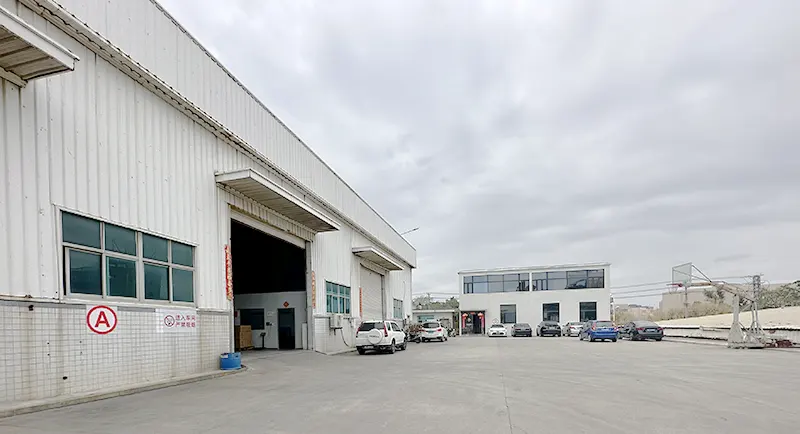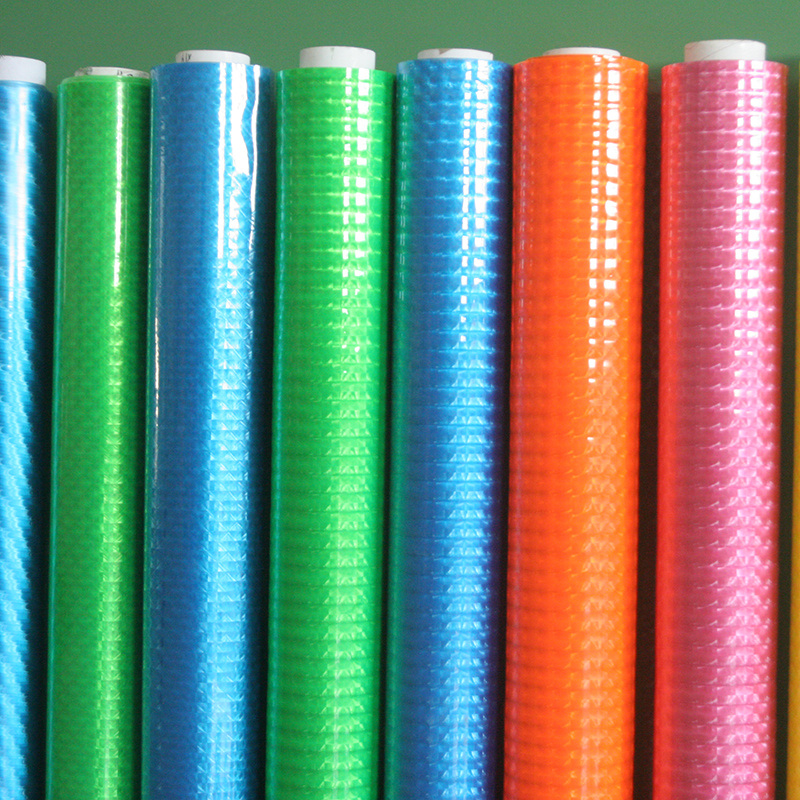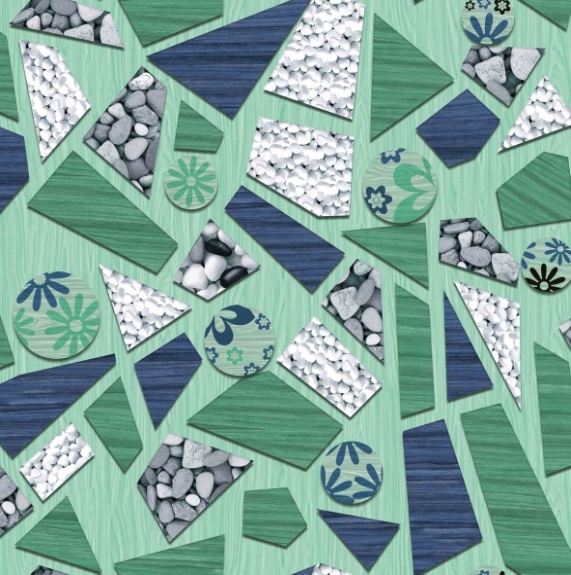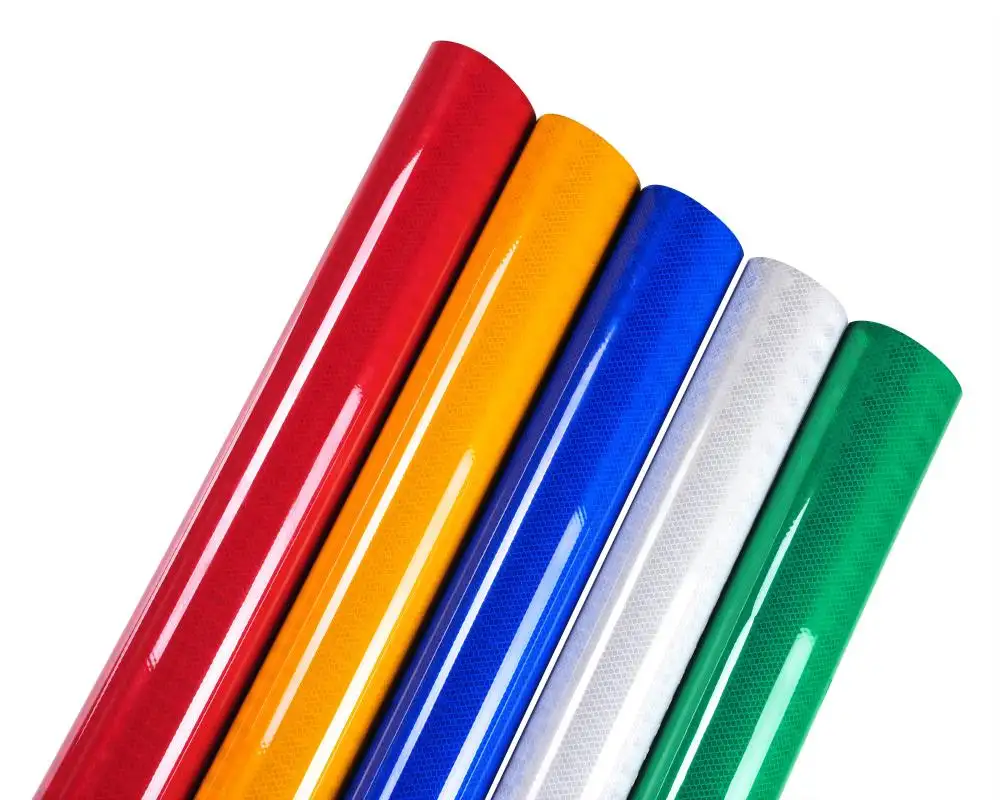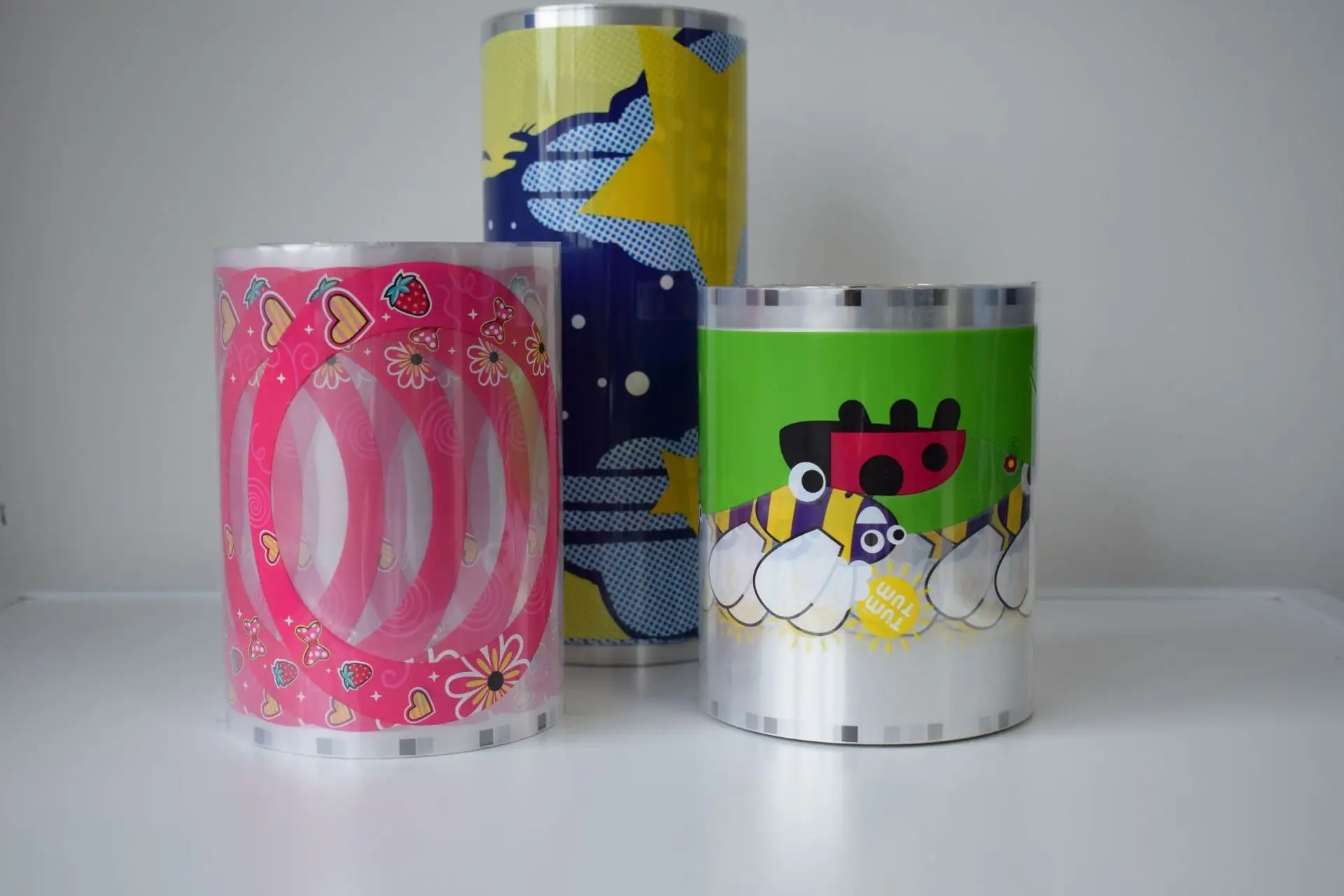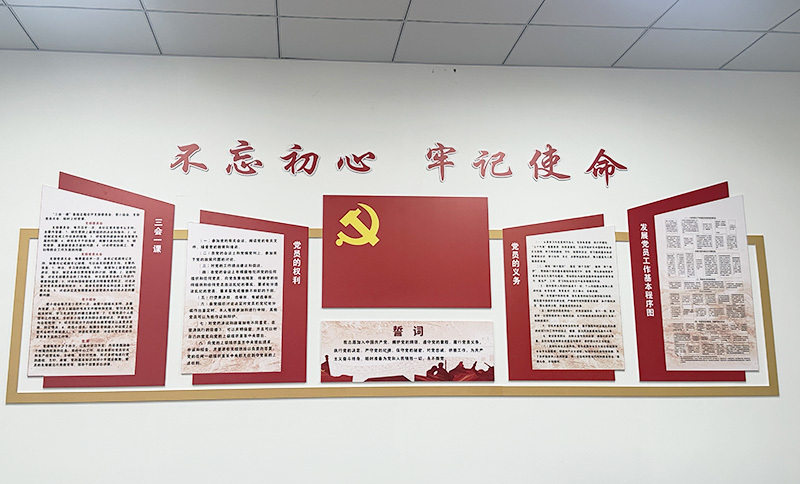Application Status and Development Trend of Plastic Film Additives
Release time:
2024-04-11
Author:
Source:
In recent years, the application field of plastic film is expanding, and the functional requirements of the film are more and more. Packaging and agriculture are the two largest markets for film applications, and a variety of modified additives have been developed to meet the special needs of different applications.

In recent years, the application field of plastic film is expanding, and the functional requirements of the film are more and more. Packaging and agriculture are the two largest markets for film applications, and a variety of modified additives have been developed to meet the special needs of different applications. Additive modification has become a simple and efficient means to realize the functionalization of thin film products.
The emergence of various functional additives has broadened the application of films in the packaging industry.
Plastic film products are widely used because of their light weight, thin shape, low cost, easy to carry and change shape. Especially in food and daily necessities packaging, agricultural covering materials, etc., the number and quality of plastic film products are constantly improving, and the functional requirements for new film materials are also increasing. To improve the quality of the film and enhance its functionality, relying solely on the change of the resin matrix and the improvement of the molding process can no longer meet the needs of market development, adding various functional additives has become a simple and efficient means to achieve film functionalization.
Additives for packaging film
Biaxially oriented film materials have always been in an important position in film packaging, and biaxially oriented polypropylene (BOPP), polyester (BOPET), nylon (BOPA) and other applications have become increasingly widespread. Traditional PVC film is widely used in various vegetables and fruits preservation, long-term frozen food packaging, microwave baking food packaging, electronic components packaging conductive film. In addition, the production of products such as cast polypropylene (CPP) and cast polyethylene (CPE) is also large. The auxiliary products combined with the above packaging film material mainly include antistatic agent, smooth and anti-blocking agent, stiffening agent, heat stabilizer, antioxidant and barrier agent.
antistatic agent
Industrial antistatic agents are mainly single compounds or compounds of non-ionic and ionic surfactants. According to whether the hydrophilic group in the molecule can be ionized, it is divided into ionic and non-ionic, and the ionic type is divided into cationic, anionic and amphoteric. The principle of antistatic is to use its hydrophilic group to absorb water vapor in the air on the plastic surface, or to form a conductive layer on the surface to reduce the surface resistance value.
Cationic antistatic agent antistatic performance is excellent, but usually poor thermal stability, easy to decompose under high temperature processing conditions and cause discoloration, generally only used in PVC products. Anionic antistatic agents cannot be used in film products because they affect transparency.
Non-ionic antistatic agents have the characteristics of low toxicity, good thermal stability, and are not easy to cause plastic aging, making them the main internal antistatic agents in packaging materials. The main varieties are fatty acid polyol ester, fatty acid, alcohol, amine ethylene oxide adduct. Representative products include ASA-51 of Beijing Research Institute of Chemical Industry, ASP-2 and other products.
In packaging materials, the determination of the performance of antistatic agents should not only examine its antistatic effect, but also pay attention to its influence on the performance of products. Because of this, the key technology of antistatic agent development focuses on the structural design and compatibility of various surfactants. At present, the development of serialized and specialized products is an important development direction of antistatic agents.
Smooth and anti-blocking agent
Modern plastics processing is moving in the direction of automation, high speed and high quality. The faster the processing speed, the easier it is to generate static electricity due to friction, and the easier it is for the film (plastic products) to adhere to each other, which seriously hinders the high linear speed extrusion; the better the transparency of the film, the higher the processing temperature, the easier it is to agglomerate and adhere. Therefore, highly effective slip agents and anti-blocking agents play an extremely important role in plastic production and automated packaging.
Domestic common slip agent varieties are amines (oleic acid amine and erucic acid amine), soaps (calcium stearate, etc.) and silicone (silicone). The latter is a liquid, which is inconvenient to add and expensive. Although soap products are cheap, the effect is not ideal, and the amount of addition is large, and it cannot be used in medium and high-grade products. Most of the common slip agents in packaging films are amine compounds, such as oleic acid amine used in LDPE films; erucic acid amine used in PP films.
The anti-blocking agent, also known as the opening agent, is generally inorganic fine particles, such as silica. However, the traditional inorganic opening agents tend to affect the haze due to the different refractive index from the base resin. The latest development of polymer particles as an opening agent solves this problem.
stiffening agent
The stiffening agent for packaging materials, also known as the stiffening agent, is mainly used in the BOPP heat shrink film for cigarettes to improve the stiffness of the BOPP film and the appearance of the packaged goods, thereby enhancing the value of the goods. At present, the measure of the advantages and disadvantages of the stiffening agent is mainly determined by examining the degree of improvement of the elastic modulus of the film. For BOPP heat shrinkable film for cigarette, the performance requirements of the manufacturer for the stiffening agent also include: not affecting the haze and other mechanical properties of the film, reducing the heat sealing temperature, etc.
At present, the research and development of stiffening agents are mainly concentrated in two areas. One approach is to increase the elastic modulus of BOPP by alloying PP with polymers containing rigid segments in the structure. Polymers generally used include polycyclopentadiene and the like. Another way is based on the principle of promoting nucleation to implement stiffening, through the presence of fine particles to play a heterogeneous nucleation role, promote and improve the crystallization of PP, so that its grain uniformity, refinement, to improve the rigidity of the product. Under the influence of this idea, the application of using organic nucleating agents to achieve stiffening has been developed to a certain extent.
heat stabilizer
Heat stabilizers for PVC packaging materials are focused on the development of non-toxic heat stabilizers to replace heavy metals such as cadmium and lead.
The development of organic heat stabilizers is one of the important aspects. Organotin stabilizers have significant advantages in transparency and color stability. The development of organic tin products focuses on the development of methyl tin and sulfur-free organic tin. At present, the domestic production of organic tin heat stabilizer is beginning to take shape.
With the further requirements of environmental protection, the relevant countries are gradually restricting the use of organic tin, which makes the calcium/zinc heat stabilizer gradually become the mainstream of PVC heat stabilizer non-toxic. With the development of domestic calcium/zinc stabilizer technology, its thermal stability efficiency has been improved, and high-efficiency calcium/zinc heat stabilizers have been developed one after another, which can partially or completely replace organic tin or barium cadmium zinc heat stabilizers, such as: liquid composite calcium/zinc stabilizer MCZ series of Beijing Chemical Industry Research Institute. The new type of green heat stabilizer-organic heat stabilizer is the ultimate development direction of non-toxic heat stabilizer for PVC packaging materials.
Antioxidant
Because of the particularity of its application, packaging materials, such as packaging food, cosmetics, etc., have high requirements for the hygiene of antioxidants. Although many common antioxidants have been tested for toxicity, they are still worried about their application. The new antioxidant vitamin E has excellent thermal oxidation resistance, itself has no toxic side effects, and is favored by the packaging products industry.
Packaging materials are close to daily life, and the consumption is huge, the recycling of plastic packaging waste is more prominent, which has a greater demand for all kinds of new recycled plastic additives. Among them, the special antioxidant can avoid the disadvantages of yellowing of the resin and a substantial decrease in strength during repeated processing, which is conducive to the development of recycling work. However, packaging materials, especially film materials, are often a composite of a variety of resins. The general hindered phenol and phosphite complex system is not satisfactory for the thermal oxidation resistance of the mixed system. The development of antioxidant or processing stabilizer system additives for recycled packaging materials is becoming a hot topic in this field.
barrier agent
In order to prevent all kinds of gases from passing through the film and extend the storage period of packaging materials, the market demand for new barrier packaging films is increasing. In addition to the use of excellent barrier resin and the use of SiOx vapor for surface deposition treatment, adding a certain amount of barrier agent is also an important means to obtain new high-barrier packaging materials. At present, the barrier agent is mainly inorganic filler, such as: layered hydrotalcite and sericite, its shape is often flake, in the product to the layered distribution, by increasing the gas and water vapor in the resin diffusion path, reduce the gas transmission rate. With the increasing research on nanomaterials at home and abroad, the application of nanomaterials in packaging materials, especially the research and development of products with good barrier effect, has been gradually carried out.
agricultural film additives
At present, agricultural plastic film products are mainly agricultural greenhouse film, plastic film, livestock and poultry breeding cover film, fruit and vegetable fresh-keeping film. For agricultural film additives, the resin used is different, the required product function is different, the choice of auxiliary system is not the same. At present, the agricultural plastic products related to functional additives at home and abroad mainly use polyethylene (PE), ethylene vinyl acetate (EVA) resin, polyvinyl chloride (PVC) and polypropylene (PP). In recent years, polyester (PET) resin films have also appeared. Agricultural plastic additives is with the development and application of different resins and continue to develop.
Anti-aging additives
Antioxidant
Because of the particularity of its application, packaging materials, such as packaging food, cosmetics, etc., have high requirements for the hygiene of antioxidants. Although many common antioxidants have been tested for toxicity, they are still worried about their application. The new antioxidant vitamin E has excellent thermal oxidation resistance, itself has no toxic side effects, and is favored by the packaging products industry.
Packaging materials are close to daily life, and the consumption is huge, the recycling of plastic packaging waste is more prominent, which has a greater demand for all kinds of new recycled plastic additives. Among them, the special antioxidant can avoid the disadvantages of yellowing of the resin and a substantial decrease in strength during repeated processing, which is conducive to the development of recycling work. However, packaging materials, especially film materials, are often a composite of a variety of resins. The general hindered phenol and phosphite complex system is not satisfactory for the thermal oxidation resistance of the mixed system. The development of antioxidant or processing stabilizer system additives for recycled packaging materials is becoming a hot topic in this field.
barrier agent
In order to prevent all kinds of gases from passing through the film and extend the storage period of packaging materials, the market demand for new barrier packaging films is increasing. In addition to the use of excellent barrier resin and the use of SiOx vapor for surface deposition treatment, adding a certain amount of barrier agent is also an important means to obtain new high-barrier packaging materials. At present, the barrier agent is mainly inorganic filler, such as: layered hydrotalcite and sericite, its shape is often flake, in the product to the layered distribution, by increasing the gas and water vapor in the resin diffusion path, reduce the gas transmission rate. With the increasing research on nanomaterials at home and abroad, the application of nanomaterials in packaging materials, especially the research and development of products with good barrier effect, has been gradually carried out.
agricultural film additives
At present, agricultural plastic film products are mainly agricultural greenhouse film, plastic film, livestock and poultry breeding cover film, fruit and vegetable fresh-keeping film. For agricultural film additives, the resin used is different, the required product function is different, the choice of auxiliary system is not the same. At present, the agricultural plastic products related to functional additives at home and abroad mainly use polyethylene (PE), ethylene vinyl acetate (EVA) resin, polyvinyl chloride (PVC) and polypropylene (PP). In recent years, polyester (PET) resin films have also appeared. Agricultural plastic additives is with the development and application of different resins and continue to develop.
Anti-aging additives
Due to the particularity of agricultural production, agricultural plastic products have been exposed to the outdoor environment of wind, rain and sunlight for a long time, and the requirements of weather resistance (anti-aging) of agricultural plastic products bear the brunt. The anti-aging system is generally composed of light stabilizers and antioxidants in a certain ratio. The selection of light stabilizer and antioxidant needs to make the two have a synergistic effect, which can simultaneously inhibit the light oxygen degradation and thermal oxygen degradation of the resin in the outdoor, in order to obtain a better anti-aging effect.
Among the light stabilizers used for PE and EVA, the amount of hindered amine light stabilizer (HALS) is the largest. At present, a new generation of high molecular weight HALS is widely used, such as 622, 944, N-30, 3346, etc. PVC resin in the use of processing will produce acidic substances, resulting in alkaline HALS failure, so generally do not use this kind of light stabilizer, usually choose ultraviolet absorber. However, with the improvement of the efficiency of the new heat stabilizer, HALS has also begun to be used in PVC.
In recent years, due to the use of HALS polyolefin greenhouses in the use of contact with acidic pesticides, or sulfur fumigation lead to early aging "explosion", so the development of low alkali resistance of pesticide-resistant hindered amine light stabilizer has become a hot research at home and abroad. So far, there are two ways to reduce the alkalinity of HALS, one is to improve the functional groups of HALS itself, such as: N-alkoxylation of hindered pyridine, etc.; the other is composite modification, that is, in HALS varieties with acid neutralizer components to neutralize acidic substances and reduce their toxic effects on HALS.
At present, the common co-antioxidants are hindered phenolic primary antioxidants and phosphite and thioester auxiliary antioxidants. In recent years, phenolic antioxidants have developed some new structures on the basis of the original hindered phenol structure, including semi-hindered phenol and bisphenol monoacrylate compounds. At the same time, according to the application characteristics of agricultural film, antioxidants with metal ion chelating effect have become new products with combined functions and have been applied to a certain extent.
Dripping agent
By adding dripping agent, the contact angle of the agricultural film surface and water is adjusted, so that water droplets soak in the film surface, avoid the formation of fog droplets on the film surface, improve the light in the shed, and prevent the occurrence of diseases caused by water droplets.
PVC film anti-fog drop agent is mainly selected from polyglycerol stearate, sorbitan monostearate type of surfactant compound. The antifogging agent for PE and EVA greenhouse film is mainly composed of stearic acid polyol ester, polyoxyethylene and organic amine nonionic surfactant.
anti-fogging agent
The prominent problem of overwintering greenhouse film popularized and applied in China is that the fog in the greenhouse film is heavy, which leads to the increase of diseases and insect pests in the greenhouse and also affects the lighting of crops in the greenhouse. Therefore, the development of anti-fogging agent has become another hot spot in the application and development of agricultural plastic additives in China.
The mechanism of anti-fogging agent is generally considered to use its high-efficiency moisture absorption ability to reduce the air humidity near the film surface to maintain it below the saturated vapor pressure, and at the same time reduce the adhesion ability of the greenhouse film to water droplets and make it flow down rapidly along the film surface, thus breaking the vapor-liquid balance of moisture in the greenhouse and realizing the reduction or elimination of fog. The advantages and disadvantages of anti fogging agent lies in its ability to absorb water vapor and the speed of water film flow on the film surface. At present, some special surfactants (fluorine, silicon, etc.) are mainly used as anti-fogging agents to reduce or even eliminate fog. This is the use of special surfactants with high moisture absorption capacity, oil repellent and water repellent, and large surface activity.
infrared blocking heat preservation agent
The addition of infrared blocking heat preservation agent can improve the heat preservation effect of greenhouse film. On the one hand, it prevents the greenhouse from greatly reducing the greenhouse temperature at night due to infrared radiation heat energy; on the other hand, it prevents the greenhouse from absorbing a large amount of infrared rays during the daytime and noon, which leads to excessive greenhouse temperature and burning crops. At present, most of the infrared blocking agents widely used in China are inorganic compounds, and the common inorganic fillers are kaolin, talc, light calcium carbonate, diatomite, sericite, and layered hydrotalcite.
light conversion agent
In recent years, with the development of agricultural technology, there has been a new type of physical fertilizer-light fertilizer, that is, to improve the light conditions of crops to achieve the increase of crop yield. By adding a light conversion agent in the agricultural film, the ultraviolet light or yellow green light that is not beneficial to crops (even harmful on certain occasions) in the sun is converted into red orange light or blue violet light that is beneficial to plant photosynthesis, thereby improving the light conditions of crops, improving the utilization rate of solar energy, and realizing the increase in yield and quality of crops, which has become an important way to use light fertilizer at present.
The light conversion agent is generally an organic substance containing π electrons. It can realize the conversion of incident light and emitted light through its own excitation, which can significantly improve crop quality and yield, and reduce pests and diseases. At present, light conversion agents are generally of two types: organic (organic fluorescent pigments) and inorganic (inorganic-organic rare earth metal ion complexes).
The organic fluorescent light conversion agent is mainly composed of a large conjugated system and some electron-donating chromophore groups, so as to realize the conversion of light energy under external light conditions. Such products have a long half-life, but there is a disadvantage of low excitation efficiency, which limits their effectiveness and is rarely used in the market.
Inorganic-organic rare earth metal ion complexes with rare earth ions such as: Eu3, Sm3, Dy3 and other elements. When the excitation energy required for some transitions is lower and the efficiency is higher, the organic compound is used as a ligand, it is easy to produce the energy conversion phenomenon of light. The high excitation efficiency of rare earth ion complex products has become the focus of the application and development of light conversion agents.
Key words:
Latest developments



